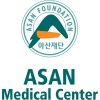
Biology and Benefits of Music Play and Stories for Kids/Parents During ALL Treatment
Acute Lymphoblastic LeukemiaPediatric1 moreMusic therapy has become a standard palliative care service in many pediatric and adult hospitals; however, a majority of music therapy research has focused on the use of music to improve psychosocial dimensions of health, without considering biological dimensions. This study builds on prior work examining the psychosocial mechanisms of action underlying an Active Music Engagement (AME) intervention, designed to help manage emotional distress and improve positive health outcomes in young children with cancer and parents, by examining its effects on biomarkers of stress and immune function. The purposes of this two group, randomized controlled trial are to examine biological mechanisms of effect and dose-response relationships of AME on child/parent stress during the consolidation phase of Acute Lymphoblastic Leukemia (ALL) treatment. Specific aims are to: Aim 1. Establish whether AME lowers child and parent cortisol during ALL treatment. Aim 2. Examine cortisol as a mediator of AME effects on child and parent outcomes during ALL treatment. Aim 3 (exploratory). Examine the dose-response relationship of AME on child and parent cortisol during ALL treatment. Findings will provide a more holistic understanding about how active music interventions work to mitigate cancer-related stress and its potential to improve immune function, with direct implications for the evidence-based use of music to improve health.

Emotion and Symptom-Focused Engagement Trial for Individuals With Acute Leukemia
Acute LeukemiaThe purpose of this study is to find out whether a novel manualized intervention, called Emotion and Symptom-focused Engagement (EASE), that combines psychological support with symptom screening plus triggered referral to early palliative care for symptom control, reduces psychological distress and physical symptom burden in individuals newly diagnosed with acute leukemia. To do this, half of the participants in this study will receive the usual care offered to patients with acute leukemia and half of the participants will receive usual care plus the EASE intervention.

A High Intensity Electronic Health Intervention for the Reduction of Learning Disparities in Childhood...
Acute LeukemiaAcute Lymphoblastic Leukemia2 moreThis clinical trial evaluates a high intensity electronic health (eHealth) intervention program for reducing learning disparities in children with cancer. Most children with leukemia and lymphoblastic lymphoma can be cured due to advancements in diagnosis and treatment. However, because treatments for these conditions target the central nervous system, these children are at increased risk for developing neurocognitive late effects (problems with attention, thinking, learning, and remembering). Fortunately, many survivors do well, but some children continue to struggle with learning and have academic difficulties after their cancer treatments. The purpose of this research study is to see whether providing parents with educational knowledge and parenting tips using videoconferencing and a special website better helps their cancer survivor child in learning and school achievement compared to typical services.

Evaluation of the Ambulatory Medical Assistance Nurse Program in Chronic Lymphocytic Leukemia
Chronic Lymphoid LeukemiaThe emergence of targeted therapy (ibrutinib, venetoclax, acalabrutinib) has revolutionized the management practices of chronic lymphoid leukemia due to their effectiveness. However, targeted therapy induces a significant additional cost compared to treatment with immunochemotherapy and their use can be problematic due to the frequent occurrence of side effects, which can be serious. In order to improve the current management of patients treated with targeted therapy, the aim of this study is to evaluate the ambulatory medical assistance nurse program. Ambulatory medical assistance is based on regular telephone calls to patient's homes by a specialist nurse and consists of the monitoring, detection and early management of possible adverse effects of targeted therapy, in link with the hematologist. The main objective of this clinical research is to determine efficiency of the ambulatory medical assistance nurse program.

Interest of PHARMaceutical Conciliation to Understand Drug Interactions, Phytotherapy, and Targeted...
Chronic Myeloid LeukemiaThe aim of this trial is therefore to identify concomitant treatments with taking Tyrosine Kinase Inhibitor (=TKI) in the indication of Chronic Myeloid Leukemia (CML), whatever the stage of the disease, via pharmaceutical conciliation. These concomitant treatments as well as their dosages will be correlated with the TKI dosage since patients must have a sufficient residual concentration to be considered effective and to confirm adherence to treatment, the leading cause of treatment failure. In the event of unsatisfactory results, pharmaceutical interventions may take place: changes in treatments (TKI and not TKI) and / or dosages. In case of modification, a new dosage of TKI should be carried out.

A Patient-Centered Communication Tool (UR-GOAL) Versus Usual Care for Older Patients With Acute...
Acute Myeloid LeukemiaThe objective of this study is to conduct a pilot randomized trial to evaluate the preliminary efficacy of the UR-GOAL tool vs. usual care in improving shared decision making and communication between 100 older patients with AML and their oncologists.

HCT With PTCy in Higher-risk MDS
Patients With MDSAcute Myeloid Leukemia (AML) Evolving From MDS1 moreThis study is conducted to evaluate the efficacy of post-transplantation cyclophosphamide with myeloablative or reduced-intensity conditioning regimen for allogeneic hematopoietic cell transplantation (HCT) in patients with higher-risk myelodysplastic syndrome (MDS). The efficacy of the treatment will be measured in terms of the GVHD-free, relapse-free survival. The secondary end points of the study include engraftment, relapse incidence, non-relapse mortality, graft-versus-host disease, donor chimerism, immune reconstitution, infections, and survivals (overall and event-free).

A Clinical Study of CAR-T Treating Relapsed or Refractory T Cell Lymphoblastic Acute Leukemia/ Lymphoma...
T-Cell Acute Lymphocytic LeukemiaThis study is a single arm, non blind, randomized, single center study aimed at evaluating the safety, pharmacokinetic characteristics, and preliminary efficacy of CD7 CAR-T cell injection in r/r T-ALL/LBL subjects.

Preventing of GVHD With Post-transplantation Cyclophosphamide, Abatacept, Vedolizumab and Calcineurin...
Acute Lymphoblastic LeukemiaMyeloblastic Leukemia4 moreGVHD prevention using a combination of post-transplantation cyclophosphamide in combination with abatacept, vedolizumab and calcineurin inhibitor in children and young adults with hematoloblastosis after myeloablative conditioning regimen with treosulfan/TBI, cyclophosphamide/etoposide, fludarabine after HSCT from matched unrelated and haploidentical donors

A Study Evaluating the Safety and Efficacy of Brexucabtagene Autoleucel (KTE-X19) in Adult Subjects...
Relapsed/Refractory B-precursor Acute Lymphoblastic LeukemiaThe primary objectives of this study are to determine the safety and efficacy of brexucabtagene autoleucel (KTE-X19) in adult participants with relapsed/refractory (r/r) B-precursor acute lymphoblastic leukemia (ALL).
